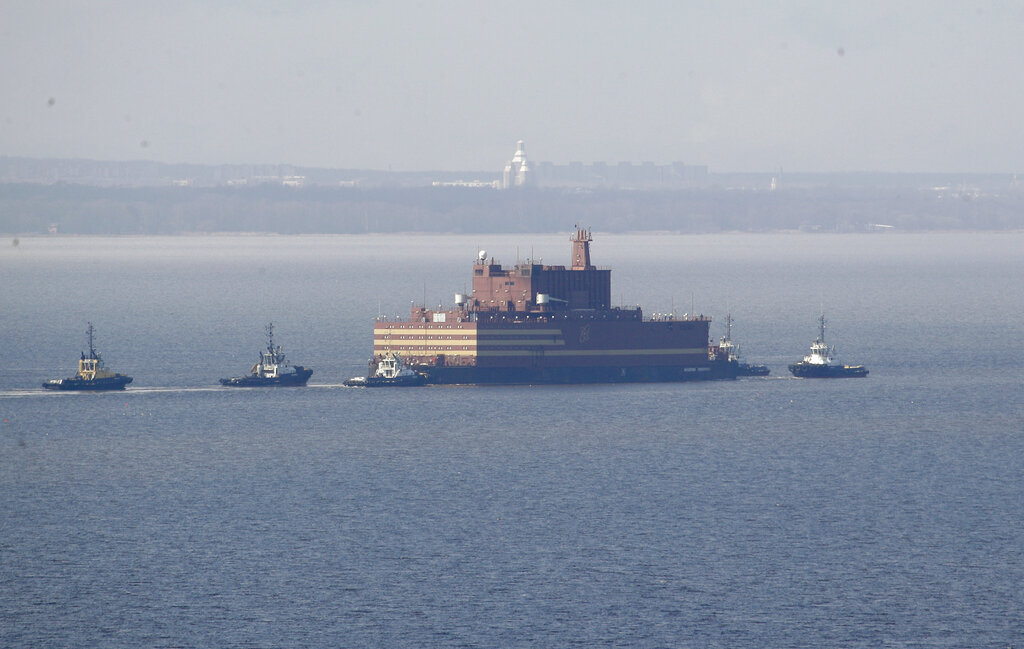
MOSCOW (AP) — Russia’s first floating nuclear power plant sailed Friday to its destination on the nation’s Arctic coast, a project that environmentalists have criticized as unsafe.
The Akademik Lomonosov is a 140-meter (459-foot) long towed platform that carries two 35-megawatt nuclear reactors. On Friday, it set out from the Arctic port of Murmansk on the Kola Peninsula on a three-week journey to Pevek on the Chukotka Peninsula more than 4,900 kilometers (about 2,650 nautical miles) east.
Its purpose is to provide power for the area, replacing the Bilibino nuclear power plant on Chukotka that is being decommissioned.
The Russian project is the first floating nuclear power plant since the U.S. MH-1A, a much smaller reactor that supplied the Panama Canal with power from 1968-1975.

FILE – In this Saturday, April 28, 2018 file photo, the floating nuclear power plant, the ‘Akademik Lomonosov’, is towed out of the St. Petersburg shipyard where it was constructed in St. Petersburg, Russia. The Akademik Lomonosov that carries two 35-megawatt nuclear reactors set out Friday Aug. 23, 2019, from the Arctic port of Murmansk on the Kola Peninsula on a three-week journey to Pevek on the Chukotka Peninsula. (AP Photo/Dmitri Lovetsky, File)
Environmentalists have criticized the project as inherently dangerous and a threat to the pristine Arctic region. Russia’s state nuclear corporation Rosatom has dismissed those concerns, insisting that the floating nuclear plant is safe to operate.
Rosatom director, Alexei Likhachev, said his corporation hopes to sell floating reactors to foreign markets. Russian officials have previously mentioned Indonesia and Sudan among potential export customers.
















